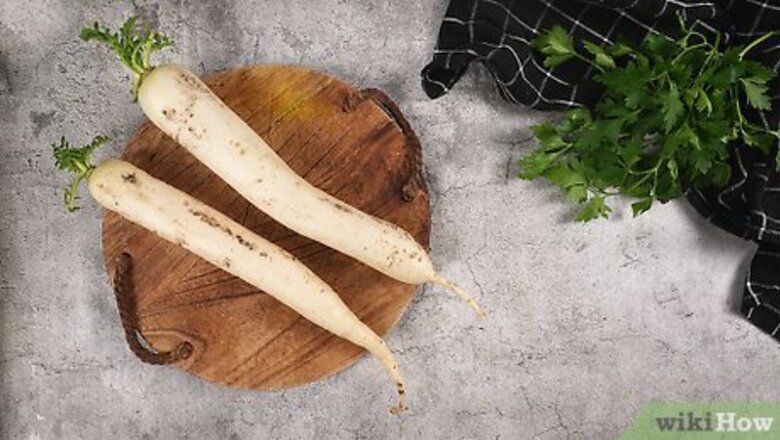
views
Prepping Daikon
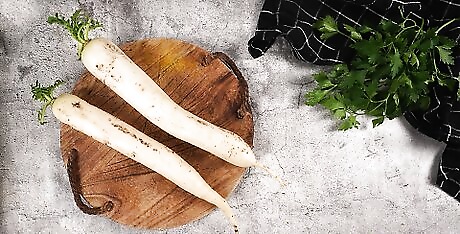
Choose a daikon radish that’s firm and smooth. Look for a daikon radish that doesn't have a lot of wrinkles or dark spots. It should be firm and smooth. They range anywhere from 6 to 15 inches (15 to 38 cm) long, so choose one that's the right size for your recipe. If you're just topping a salad with it, pick a smaller daikon. For casseroles or stews, go with a larger one. Daikon can be purchased at Asian markets and grocery stores that offer a wide selection of produce.
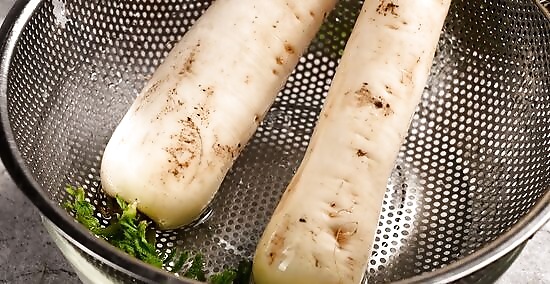
Wash the daikon under running water. Hold the daikon under running water to rinse off any dirt. You don't need to use any soap or detergent, but you can brush it gently with your fingers or a vegetable brush if it's really dirty.
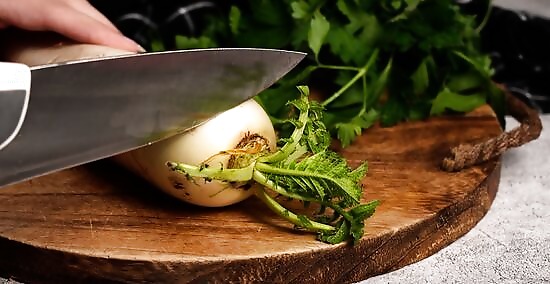
Slice off the leaves and the top of the radish. If your daikon still has the leaves on, use a chef’s knife to slice them off, along with a little bit of the top. Make the cut about half an inch (1.3 cm) down from where the leaves connect to the radish. You can keep the leaves and use them as seasoning in soup or anything you want to add some spicy bite to.
Peel the skin off with a vegetable peeler. Its skin is too thick and does not soften easily, so it is better to remove it. Hold the daikon upright, with the freshly cut flat end pressed down onto a cutting board. With the rounded-out edge of the peeler facing the vegetable, swipe the peeler down along the skin in long strokes. Rotate the radish with one hand as you shave off the skin all the way around. You can leave the skin on if you want an extra punch of spicy flavor. If you don’t have a vegetable peeler, you can use a knife and make shallow slices around the outside of the radish.
Cutting Daikon
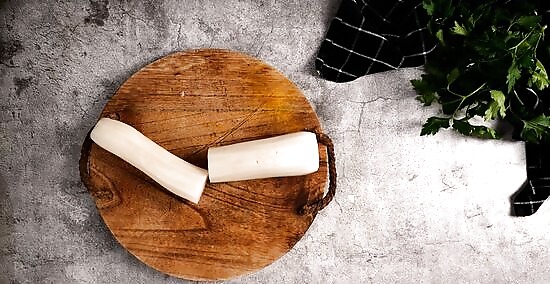
Cut a large daikon in half. If you've bought a daikon that's longer than the length of your hand, cut it in half to make it easier to manage. Use a chef’s knife to make a single cut across the middle, or cut it into thirds if it’s really long.

Julienne the daikon for a salad topping. Lay the daikon flat and slice off all the rounded edges so that it becomes rectangular. Cut the rectangle lengthwise into slices that are ⅛ inch (0.3 cm) thick. Then stack these slices and cut them lengthwise again, creating long, skinny pieces. Sprinkle these pieces on top of an Asian salad, or use them as a cabbage replacement for coleslaw.

Cube the radish for a side dish or stew. Lay the daikon flat and cut it lengthwise into half-inch (1.3 cm) slices. Stack a few of the slices and cut them lengthwise again to make half-inch strips. Then line up the strips and slice them into half-inch cubes. You don’t need to cut off the rounded edges first unless you want to make perfect cubes.
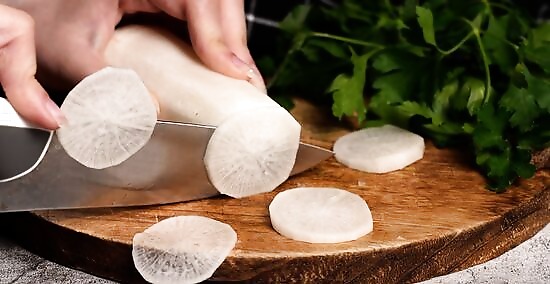
Slice thin rounds for dipping or frying. Hold the daikon flat against the cutting board and cut thin slices from the bottom to the top of the radish to create rounds. Do thick, quarter-inch (0.6 cm) rounds if you want to use them for dipping or snacking. Make them thinner – less than ⅛ inch (0.3 cm) – if you want to fry or bake them as chips.
Shred the daikon for a rice substitute. Place a veggie or cheese shredder over a cutting board, and hold the flat end of the daikon against it. Move the daikon up and down quickly to create shavings. These can be used as a rice substitute in sushi if you’re looking to cut down on carbs. You can grate the bottom part and use it as a condiment to spice up the dipping soup of noodles.
Cooking Daikon

Stir fry the radish. Pair the daikon with carrots, mushrooms, and potatoes for a stir fry. Depending on your preference, you can julienne or cube the vegetables. Throw the mushrooms, carrots, and potatoes into the pan with some olive oil over medium-high heat. Wait about three minutes before adding the daikon. Then add your chopped daikon, a couple tablespoons (30 mL) each of soy sauce and white wine, and a teaspoon (2.6 g) of five-spice powder. Place a lid over the pan and let the concoction cook for 10 to 12 minutes, stirring occasionally.

Boil the daikon cubes for a side dish. Toss daikon cubes into a pot and pour enough water in to cover them. Boil the cubes for about 20 minutes, then drain the water. Season the daikon with a little bit of oregano, garlic, salt, and pepper, and add a splash of olive oil. Try serving boiled daikon cubes alongside steak as a substitute for potatoes.
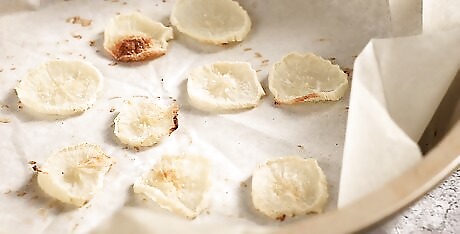
Toast daikon rounds for radish chips. Using a pastry brush, rub the daikon rounds with butter, then spread them in a single layer across a baking sheet. Toast them in the oven at 450 degrees Fahrenheit (232 degrees C) until they’re crispy, flipping them halfway through the cook time. Start with about 15 minutes, and then add more time if you like them crispier.
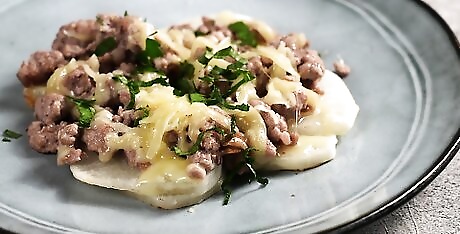
Replace potatoes with daikon in your favorite casseroles. Take your favorite casserole recipe that has potatoes and swap them out for daikon. Or mix the daikon up with diced meat, broccoli, bacon bits, a cup (0.2 L) of heavy cream, and your favorite shredded cheese. Bake at 325 degrees Fahrenheit (163 degrees C) for 20 minutes.

Sprinkle julienned daikon on sandwiches or tacos. Top your bahn mi sandwich with julienned daikon, or sprinkle it over a Korean barbecue taco. If you want to season it first, splash it with soy sauce or soak it in red wine vinegar for a few minutes.
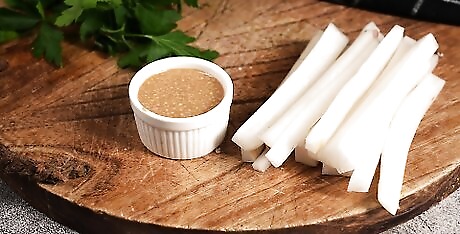
Serve daikon rounds cold. Snack on freshly cut daikon rounds by dipping them into dressings and sauces. Make a soy- or ginger-based dipping sauce, or try a wasabi sauce for a spicier treat. You can also dip it in regular ranch dressing if you like to keep it simple.




















Comments
0 comment